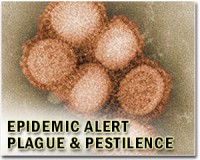| . |  |
. |
Washington (AFP) Feb 21, 2011 Seaweed emits a natural chemical response to ward off fungi that would otherwise colonize an injured plant, a process that could help the search for anti-malaria drugs, a US scientist said Monday. Up to a million people per year die from malaria, which can be caused by the parasite Plasmodium falciparum, and new drugs are needed because the parasite is developing resistance to popular pharmaceuticals. "There are only a couple of drugs left that are effective against malaria in all areas of the world, so we are hopeful that these molecules will continue to show promise as we develop them further as pharmaceutical leads," said scientist Julia Kubanek, an associate professor at Georgia Tech. Researchers discovered the class of seaweed defense compounds, known as bromophycolides, by studying 800 species of seaweed off Fiji Island. One type in particular caught their attention, Callophycus serratus, "because it seemed particularly adept at fighting off microbial infections," said the study presented Monday at an international science conference in Washington. The molecules appeared in light-colored blotches on certain parts of the seaweed, and were visible with the help of a new technique known as desorption electrospray ionization mass spectrometry developed at the Georgia Tech's School of Chemistry and Biochemistry. "The alga is marshaling its defenses and displaying them in a way that blocks the entry points for microbes that might invade and cause disease," said Kubanek. "Seaweeds don't have immune responses like humans do. But instead, they have some chemical compounds in their tissues to protect them," she said. "We can co-opt these chemical processes for human benefit in the form of new treatments for diseases that affect us." However, more research needs to be done before the process can be turned into a drug for humans, and studies on mice are planned next. "As with other potential drug compounds, however, the likelihood that this molecule will have just the right chemistry to be useful in humans is relatively small," said the study. The research was funded by the National Institutes of Health as part of a long-term study of chemical signaling among organisms in coral reefs. In January, the World Health Organization launched a global plan to halt the spread of resistance to artemisinin, a key compound of new malaria drugs, warning that not acting would be "catastrophic." Resistance has emerged in areas on the Cambodia-Thailand border, while a spread to other areas in Cambodia, Myanmar, Thailand and Vietnam is suspected. The WHO said more than 175 million dollars in funding would be required for research and to contain the resistance in these areas.
Share This Article With Planet Earth
Related Links Epidemics on Earth - Bird Flu, HIV/AIDS, Ebola
 Three more swine flu deaths in Hong Kong: officials
Three more swine flu deaths in Hong Kong: officialsHong Kong (AFP) Feb 21, 2011 Three more people in Hong Kong have died from swine flu, bringing the death toll to at least 17 in the past month, the territory's health authority said Monday. Health officials have stepped up surveillance on the virulent strain of influenza since late last month amid concerns about more deaths in the teeming metropolis of seven million. The latest three victims, who died last week, wer ... read more |
|
| The content herein, unless otherwise known to be public domain, are Copyright 1995-2010 - SpaceDaily. AFP and UPI Wire Stories are copyright Agence France-Presse and United Press International. ESA Portal Reports are copyright European Space Agency. All NASA sourced material is public domain. Additional copyrights may apply in whole or part to other bona fide parties. Advertising does not imply endorsement,agreement or approval of any opinions, statements or information provided by SpaceDaily on any Web page published or hosted by SpaceDaily. Privacy Statement |